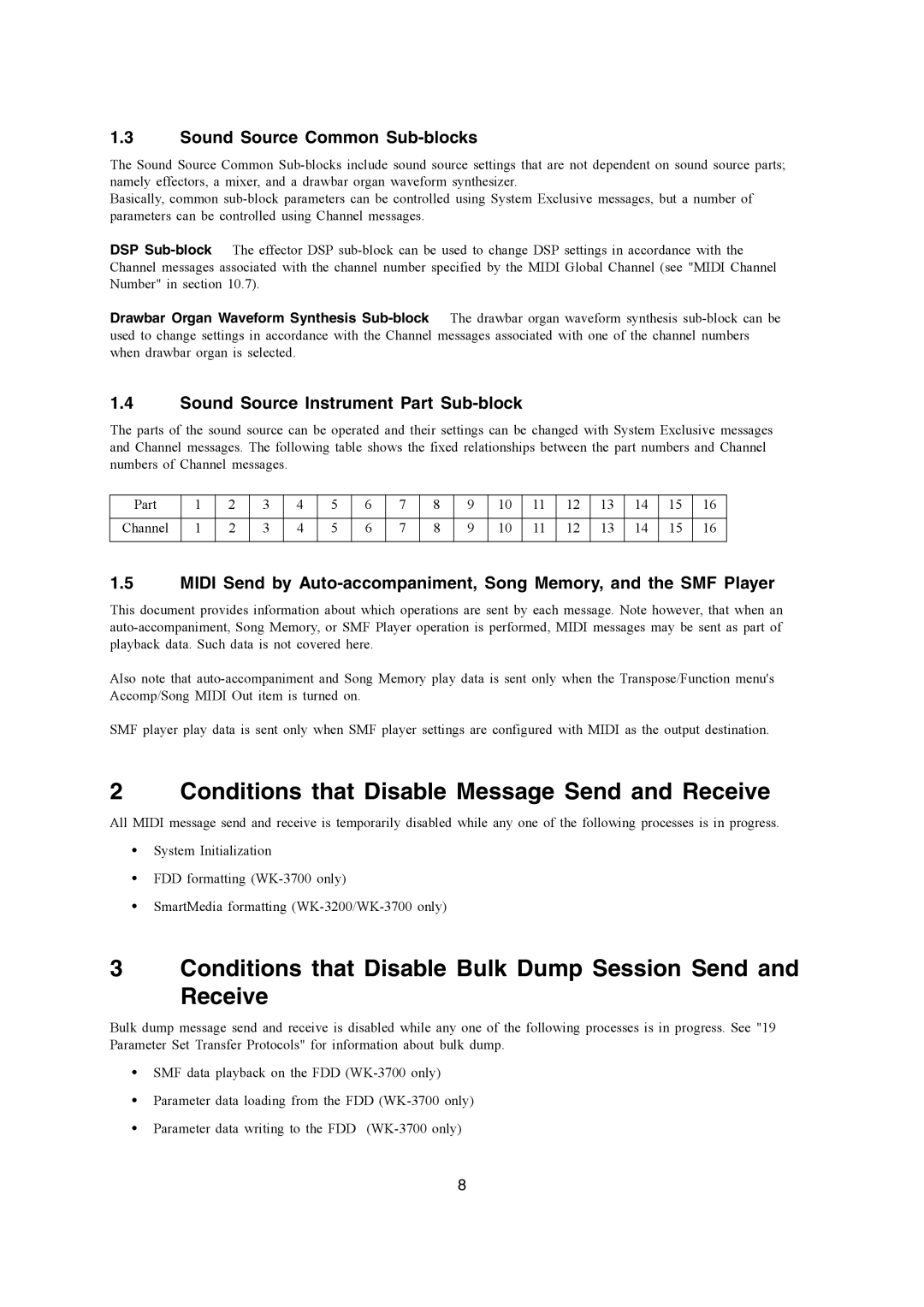WK-3700, WK-3200, CTK-900 specifications
The Casio CTK-900, WK-3200, and WK-3700 are a trio of notable keyboards that cater to both beginner and intermediate musicians. Each model features a range of impressive specifications and functionalities designed to enhance the musical experience while allowing for creativity and exploration in sound.The Casio CTK-900 is a compact 61-key keyboard that includes 600 tones and 180 rhythms, offering a diverse palette for anyone looking to explore different music styles. One of its key features is the Dance Music Mode, which simplifies the process of creating electronic music tracks through a user-friendly interface. The CTK-900 also includes a High-Quality module and a built-in lesson function that guides users through playing. With a lightweight design, it is highly portable and perfect for musicians on the go. Its MIDI connectivity allows for easy integration with computer software for recording and music production.
Moving on to the WK-3200, this model features a 76-key touch response keyboard, which provides a more extensive range for playing. It includes 670 tones and 200 rhythms, giving users even more options for musical expression. The WK-3200 also offers a larger LCD display for easier navigation through settings, and it features a Music Tutor function that helps users improve their skills. With layered and split keyboard capabilities, the WK-3200 is ideal for those looking to perform as a solo artist or in a band setting. Its built-in speaker system delivers clear sound output, enhancing the overall playing experience.
The WK-3700 takes many of the positives from the WK-3200 and elevates them further. With the same 76-key layout, it provides expressive playing capabilities while incorporating over 700 tones and 200 rhythms. This model also allows users to record their performances in real time using a built-in 6-track sequencer, making it easier for musicians to arrange and edit their own compositions. Additionally, the WK-3700 includes advanced features like the ambiance and reverb effects, providing an enhanced sound quality. The incorporation of features such as a song bank with over 100 pre-recorded songs ensures that users can learn and play along with ease.
Overall, the Casio CTK-900, WK-3200, and WK-3700 are excellent choices for musicians seeking versatile and user-friendly keyboards. Each model brings unique features and technologies that support musical innovation while catering to a wide range of skill levels. Whether you are a budding artist or a seasoned performer, these keyboards provide an effective blend of utility, quality, and fun.
